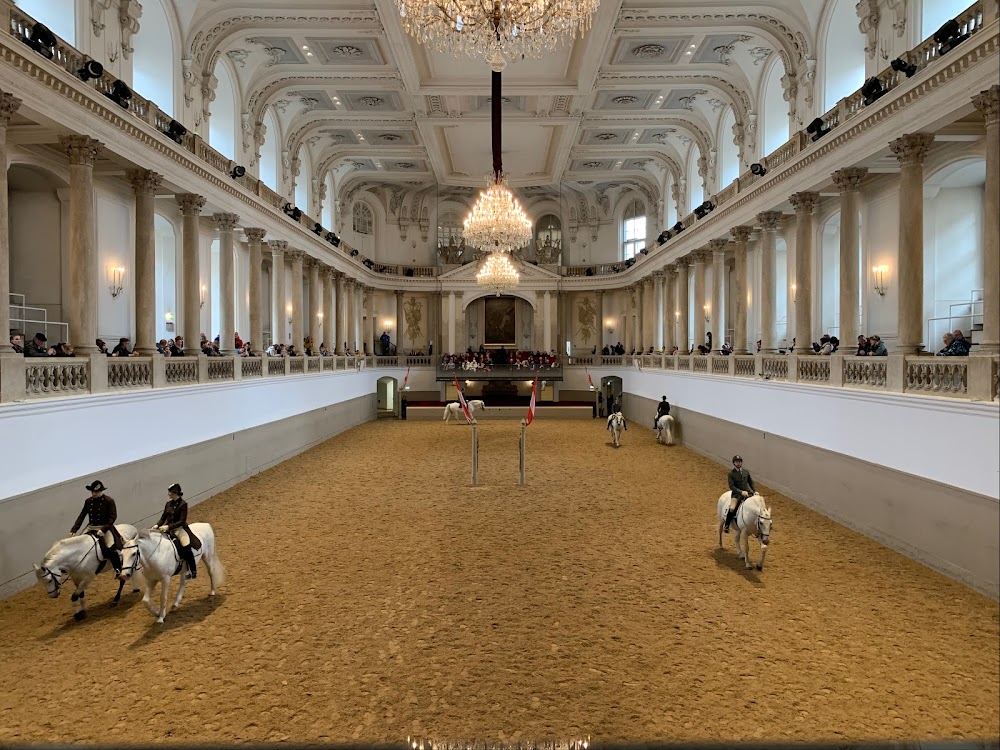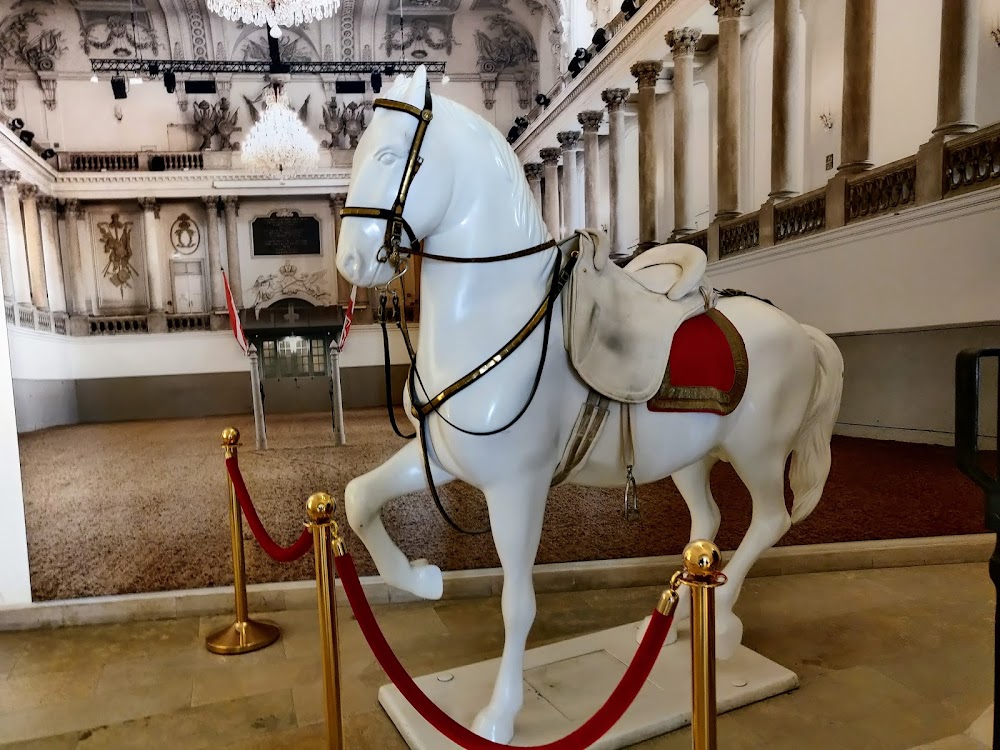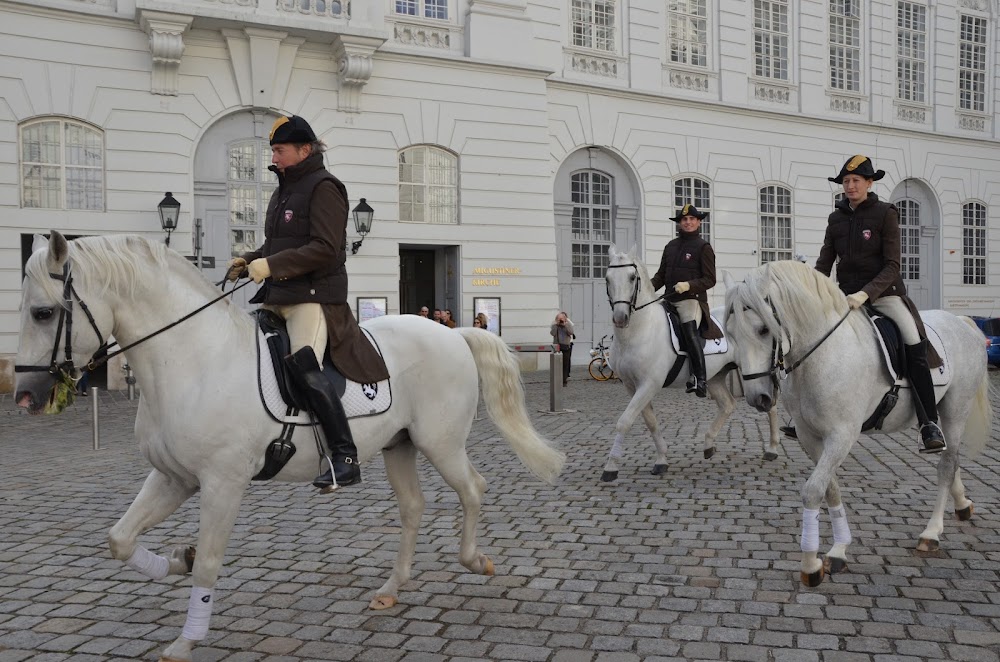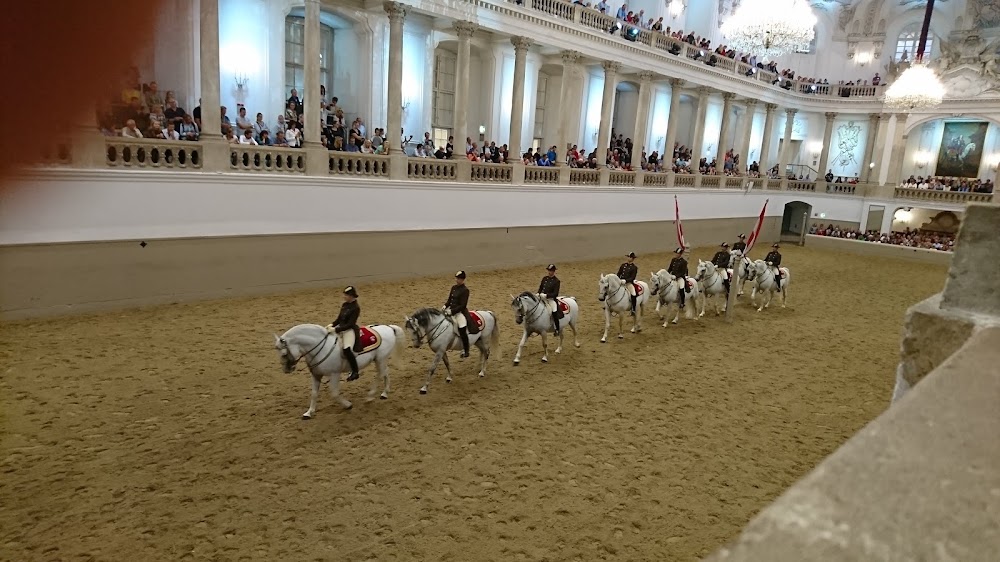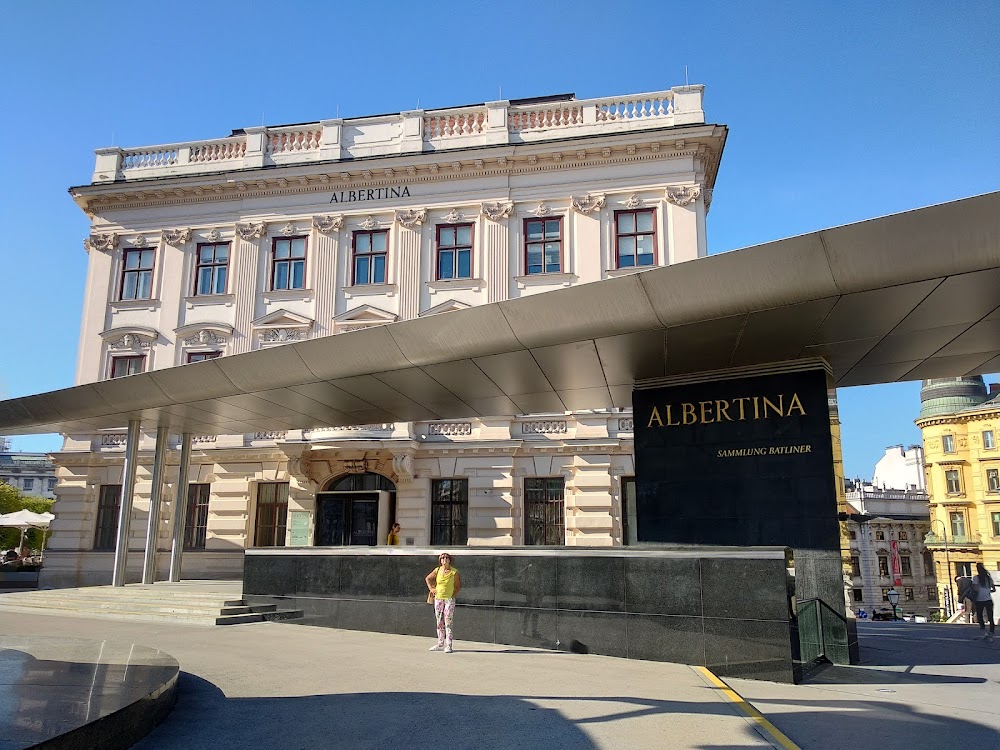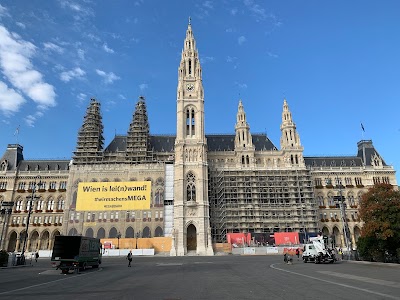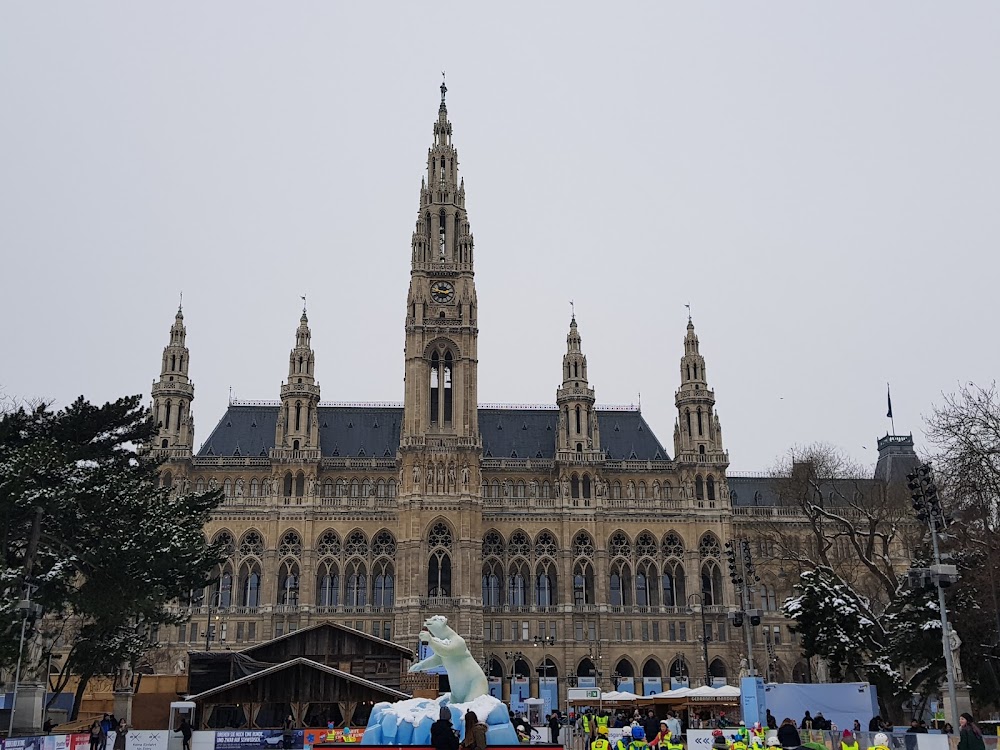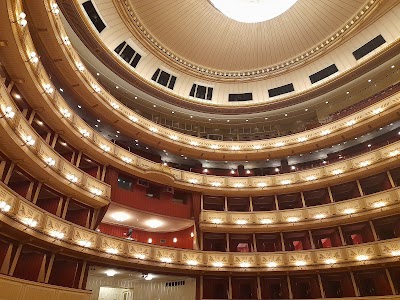Spanish Riding School (Spanische Hofreitschule)
Related Places
Overview
The Spanish Riding School, a true gem nestled in the heart of Vienna, Austria, is celebrated for its rich equestrian tradition, classical dressage, and the magnificent Lipizzaner horses. This esteemed institution traces its roots back to the Renaissance, a vibrant era that cherished art, culture, and the refined art of classical horsemanship.
The story of the Spanish Riding School begins in 1565, when Archduke Charles II, the ruler of Inner Austria, established a stud farm in Lipizza, now part of Slovenia. His vision was to breed the ideal horse for both military and courtly endeavors, leading to the creation of the Lipizzaner breed. Named after the farm, these horses became synonymous with the school's legacy.
In 1572, the first official record of the Spanish Riding School was documented, marking the beginning of its illustrious journey. Initially named for the Spanish horses used in training, the school quickly evolved into a symbol of aristocratic culture and refined equestrian artistry.
At the heart of this institution is the Winter Riding School, an architectural marvel of the baroque period. Commissioned by Emperor Charles VI, construction commenced in 1729 and concluded in 1735. Designed by the esteemed architect Joseph Emanuel Fischer von Erlach, this grand hall features stunning baroque elements, creating a regal ambiance perfect for both the Habsburg court and the breathtaking performances of the Lipizzaners. Today, the Winter Riding School continues to host performances and training sessions, celebrated for its historical significance and opulence.
The Lipizzaner horses themselves are a product of meticulous breeding, consisting of six classical families of stallions and eighteen families of mares. These majestic white horses are renowned for their grace, strength, and unique characteristics. Their training is an intensive process that begins at a young age and spans several years, during which they master complex movements and figures. The highly synchronized and visually stunning shows for which the school is famous are a testament to this rigorous training.
Training methods at the Spanish Riding School have remained steadfast for centuries, focusing on patience, discipline, and harmony between horse and rider. Dressage techniques such as the piaffe, passage, and flying changes are meticulously perfected, alongside classical exercises known as "Airs above the Ground." Originally designed for battle, these spectacular maneuvers have transformed into an elegant form of artistic expression.
Throughout its long history, the Spanish Riding School has navigated numerous challenges, including political upheavals and wars. Yet, it has consistently flourished, thanks to passionate individuals committed to preserving this unique cultural heritage. For example, during World War II, the Lipizzaners were evacuated for their safety, and after the war, General George S. Patton played a pivotal role in their return to Austria, recognizing the breed's cultural significance.
Today, the Spanish Riding School stands as a living museum, allowing visitors to experience centuries-old traditions in their most authentic form. The school hosts regular public performances and guided tours, offering insights into the history, training methods, and care of the Lipizzaner horses. These events aim to educate and inspire, showcasing the remarkable bond between horse and human that manifests in beauty and precision.
Furthermore, the Spanish Riding School is dedicated to education, offering specialized programs and courses for aspiring riders. This commitment ensures that the art of classical dressage is passed down to future generations, preserving nearly 450 years of knowledge and skill.
In conclusion, the Spanish Riding School in Vienna is a testament to the enduring allure of classical horsemanship. Its rich history, breathtaking performances, and unwavering dedication to tradition make it a cherished pillar of Austrian culture and a beacon of equestrian excellence recognized worldwide.


